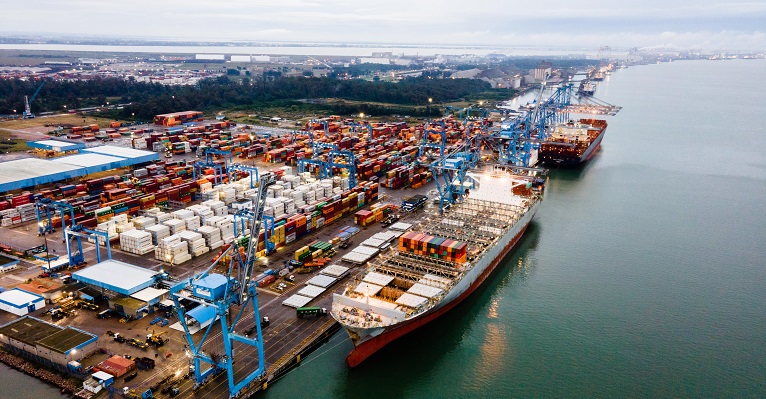The privatization of Brazil’s largest and busiest sea terminal, the Port of Santos clears another barrier. In effect the final report released by the Brazilian federal court of audits TCU did not express major reservations over the privatization process.
The adjustments required by the court of accounts were deemed minor by the authorities backing this project, which is one of the president Bolsonaro administration’s priorities in the infrastructure field. Despite that, the process has been delayed many times in the recent past.
The document issued by the Port and Railway Infrastructure Inspection Department, known as Seinfra, was sent to the office of the rapporteur, Minister Bruno Dantas, who wants to debate the process in a plenary session next week. However, behind-the-scenes machinations are trying to postpone the process once more by asking one of the court’s ministers to open a review process. Aides to president-elect Luiz Inácio Lula da Silva have shown opposition to the project and are unwilling to support it when it should become effective in 2023.
The government voluntarily made two amendments during conversations with auditors. One of them pertained to the increased Weighted Average Capital Cost (WACC), which rose from the 7.35% initially proposed to 8.73% per year. Another was the change in the minimum grant amount, which fell from R$3.015 billion to R$2.557 billion.
What is at stake at the court is the privatization of the Santos Port Authority (formerly Codesp) and, together with it, the concession of the port authority facilities to private parties for 35 years, with a possible five-year contract extension (in case of economic rebalancing). The contract provides R$ 6 billion in investments and another R$ 20.6 billion in operating expenses, including dredging.
The Port of Santos, the second largest in Latin America and 45th in the world regarding containers, handling 27% of all Brazilian foreign trade. Last year, it received 147 million tons of cargo and 4.8 million containers. Ten thousand trucks and 1,200 train cars pass through the port complex daily.
Among the improvements mentioned by those that advocated the privatization is the deepening of waterways to 16 meters by 2026 and 17 meters by 2033 (today it is 15 meters), new shipping berths, the relocation of the passenger terminal to the Valongo region, investments of R$ 664 million in road works and the construction of a Santos-Guarujá underwater tunnel. In addition, implementing the VTMIS (port traffic management system) and the ISPS Code (security system) is also part of the contract’s requirements.
However Lula’s Workers Party prefers an IPO for the Santos Port Authority while also keeping control in the hands of the state, in addition to offering concessions for specific services like dredging.
Source: Hellenic Shipping News





